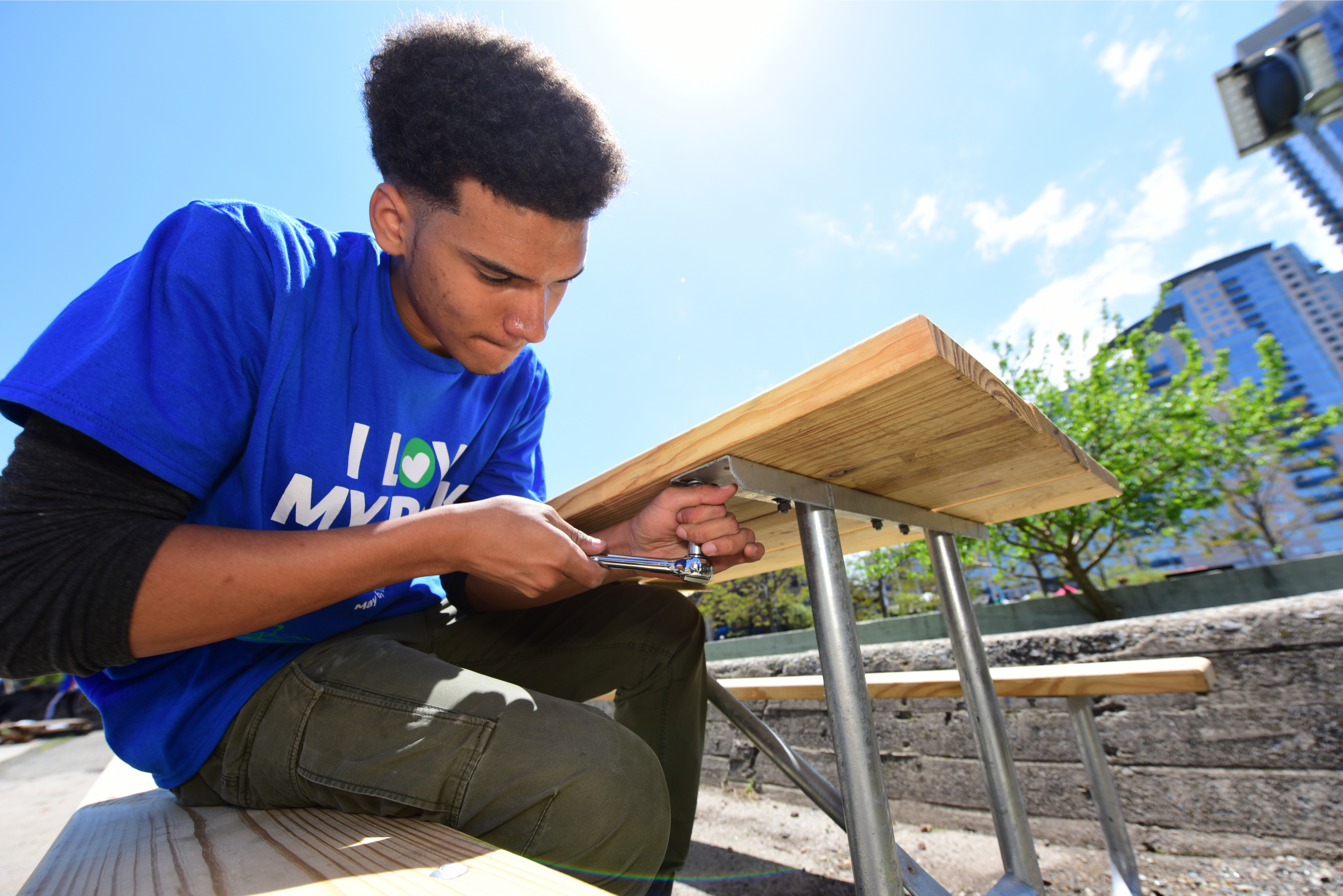
President Biden’s American Families Plan adds to the long list of proposals to make college more affordable, in this case with two free years of community college. Meanwhile the American Rescue Plan Act of 2021 includes a $1 billion boost to national service, through AmeriCorps.
In the New Contract With the Middle Class, Isabel Sawhill and Richard Reeves argue that these two goals – post-secondary education as a public good, and creating a norm of public service – should be combined. They agree with President Biden that college (or vocational equivalent) should be free for at least two years – but only for those who undertake a year of national service. They call their plan Scholarships for Service.
Why free two-year college
The rapid rise of direct costs associated with attending college over the past several decades has increased the number of Americans taking out student loans. About 75% of student loan borrowers took loans to go to two- or four-year colleges; and these borrowers account for about half of all outstanding student loan debt. As Sawhill and Reeves write:
“The idea of making college free has an immediate appeal. Middle-class families know their children will need more than a high school education to flourish, but they worry about debt. Critics of free college proposals (including ourselves) point out that since students from affluent families attend the most expensive colleges, progressive-sounding free college proposals often turn out to be regressive in practice.
This argument could be made — and in fact was made, a century ago — against the idea of providing free high school. At some point, Americans decided that a high school education ought to be provided as a public good. In the first half of the 20th century, the average American could ascend to the middle class on a high school diploma alone, and our education system reflected this reality by making K-12 free. Another criticism is that completion is now a bigger concern than enrollment; this is true, but there are effective programs that provide the support students need to earn a degree or a certificate, which should be expanded.”
Why more national service
While the free college debate continues, President Biden signed into law the American Rescue Plan Act of 2021 that included $1 billion to expand national service opportunities through AmeriCorps programs. The renewed interest in national service as led to more discussion of whether more young Americans are willing to embrace national service, and even whether such service should be mandatory, as in many other nations..
The demand certainly appears to be there: in most years over the last decade or so, the AmeriCorps applicants-to-opportunities ratio has probably run somewhere between three to five applicants for every one available slot. Many Americans would like to serve, but opportunities for them to do so through national programs are limited. The American Rescue Plan Act increases the AmeriCorps living allowance to make service more accessible and inclusive and helps stabilize existing national service programs and expand into new communities.
The proposal: Scholarships for Service
Reeves and Sawhill write that “in today’s economy, a high school diploma is not enough. Post-secondary education or training is now the gateway to the American Dream. We need a free public K-14 education system. But in the spirit of partnership that underpins this contract, free college or vocational training ought to be conditional on time in the military or civic volunteering: Scholarships for Service.”
Specifically, they propose that anybody completing a year of full-time national service, either military or civilian, would be entitled to two years of tuition-free education at any public higher education institution in their home state, including technical and vocational colleges, or at a government-subsidized apprenticeship with an employer. Reeves and Sawhill believe that national service and post-secondary learning should be the norm for every young American. By combining the responsibility to serve with the right to higher education, they hope to encourage both.
What would free college or training cost, under the scholarships-for-service plan? It would depend on how many people took up the offer, which colleges they then attended, how many years they attended, and in which states they attended. But for illustration, the Contract assumes that a third of young Americans perform a year of service and then complete two years of post-secondary training or education. The cost of the free college element would be around $20 billion a year, and according to the authors, a much-needed investment in both the social capital of our nation, and the human capital of its future citizens.
More national service and more access to public colleges
Reeves and Sawhill want a world where the question “where do you do your service?” is as natural as “where are you from?” or “where did you go to school?”. The idea of large-scale voluntary national service is popular, with about four out of five Americans supporting it. Additionally, 63% of Americans favor the idea of free tuition at public colleges. Reeves and Sawhill’s Scholarships for Service idea combines the right to higher education with the responsibility to serve.
"try" - Google News
May 26, 2021 at 09:26PM
https://ift.tt/3fllGog
Free college? Try Scholarships for Service - Brookings Institution
"try" - Google News
https://ift.tt/3b52l6K
Shoes Man Tutorial
Pos News Update
Meme Update
Korean Entertainment News
Japan News Update
Bagikan Berita Ini














0 Response to "Free college? Try Scholarships for Service - Brookings Institution"
Post a Comment